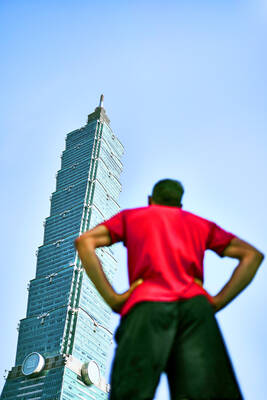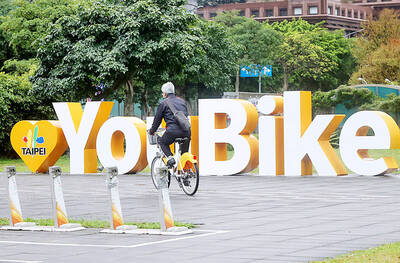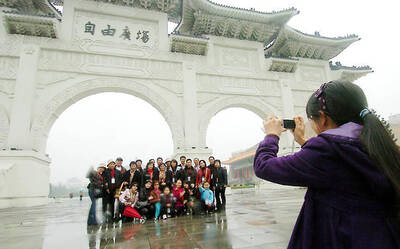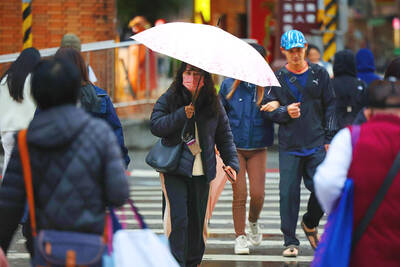Wen Jiabao (
Wen starts his trip in Fiji where he will meet leaders from eight island nations in the tourist town of Nadi for the first ever China-Pacific Islands Countries Economic Development and Cooperation Forum.
But six island nations which recognize Taiwan instead of China will be missing, highlighting the long-running competition for recognition between Beijing and Taipei in the region.
Only 26 countries recognize Taiwan, and nearly a quarter of them are from the Pacific.
The evidence of the rivalry is everywhere in the Pacific.
Samoa's largest building, the five-story government office, was built with Chinese aid. Dollar diplomacy by both Beijing and Taipei is responsible for many buildings, agriculture projects and other initiatives across the region.
Taiwan's supporters include some of the poorest and smallest countries in the region -- Nauru, Palau, the Solomon Islands, Tuvalu, Kiribati and the Marshall Islands. Some have shifted alliances a number of times and become adept at virtually auctioning themselves off to the highest bidder.
Both China and Taiwan have been accused of interfering in the political process in island countries by handing out cash to their favored politicians.
The allegations have been made against Taiwan most recently in the current Solomon Islands election campaign but denied by Taipei and the Solomons government.
Associate professor John Henderson of Canterbury University in Christchurch, New Zealand, said China's new diplomatic push was partly aimed at preventing Taiwan getting any further recognition in the region but it goes beyond that.
"The main thing is symbolism. China taking its leadership role in the region seriously," he said.
"They want to get recognition of a country which is certainly destined to play a major role in the region. It's recognition of an emerging major power."
The traditional powers in the region -- the US and Europe, Australia, New Zealand -- have to learn to work alongside China, and island countries have another option for aid and political support, he said.
China has been gaining influence in the Pacific for many years, with a regular procession of Pacific Islands politicians getting five-star treatment during visits to Beijing.
"There have been more Pacific Islands minister visits to China than to any other country," said University of the South Pacific emeritus professor Ron Crocombe.
He said the engagement with China was part of the region turning increasingly to Asia, with Japan also increasing its diplomacy though efforts including the annual summit between Tokyo and regional leaders.
"The whole balance of power is going to swing to Asia," Crocombe said.
Most Pacific towns have an established Chinese population and they have been joined by a new wave of immigrants in the last two decades. Some came as a result of passport selling schemes by countries such as Tonga, Nauru and the Marshall Islands in the 1990s.
Concerns have been raised about a number of criminals among the newer arrivals. These were heightened in Fiji in 2004 when several Chinese were arrested in Suva after a police raid on the largest methamphetamine laboratory ever discovered in the southern hemisphere.
The main focus of the conference will be on economic cooperation and China is already active in fisheries, while a few of the larger island countries also offer timber and mineral resources.
In January, resource-hungry China and Papua New Guinea signed a deal to develop the latter's gas reserves and late last year also agreed to develop a cobalt and nickel mine. Trade between the island countries and China grew 58 percent to US$838 million last year, according to Chinese figures.

US climber Alex Honnold is to attempt to scale Taipei 101 without a rope and harness in a live Netflix special on Jan. 24, the streaming platform announced on Wednesday. Accounting for the time difference, the two-hour broadcast of Honnold’s climb, called Skyscraper Live, is to air on Jan. 23 in the US, Netflix said in a statement. Honnold, 40, was the first person ever to free solo climb the 900m El Capitan rock formation in Yosemite National Park — a feat that was recorded and later made into the 2018 documentary film Free Solo. Netflix previewed Skyscraper Live in October, after videos

Starting on Jan. 1, YouBike riders must have insurance to use the service, and a six-month trial of NT$5 coupons under certain conditions would be implemented to balance bike shortages, a joint statement from transportation departments across Taipei, New Taipei City and Taoyuan announced yesterday. The rental bike system operator said that coupons would be offered to riders to rent bikes from full stations, for riders who take out an electric-assisted bike from a full station, and for riders who return a bike to an empty station. All riders with YouBike accounts are automatically eligible for the program, and each membership account

NUMBERS IMBALANCE: More than 4 million Taiwanese have visited China this year, while only about half a million Chinese have visited here Beijing has yet to respond to Taiwan’s requests for negotiation over matters related to the recovery of cross-strait tourism, the Tourism Administration said yesterday. Taiwan’s tourism authority issued the statement after Chinese-language daily the China Times reported yesterday that the government’s policy of banning group tours to China does not stop Taiwanese from visiting the country. As of October, more than 4.2 million had traveled to China this year, exceeding last year. Beijing estimated the number of Taiwanese tourists in China could reach 4.5 million this year. By contrast, only 500,000 Chinese tourists are expected in Taiwan, the report said. The report

Temperatures are forecast to drop steadily as a continental cold air mass moves across Taiwan, with some areas also likely to see heavy rainfall, the Central Weather Administration (CWA) said. From today through early tomorrow, a cold air mass would keep temperatures low across central and northern Taiwan, and the eastern half of Taiwan proper, with isolated brief showers forecast along Keelung’s north coast, Taipei and New Taipei City’s mountainous areas and eastern Taiwan, it said. Lows of 11°C to 15°C are forecast in central and northern Taiwan, Yilan County, and the outlying Kinmen and Lienchiang (Matsu) counties, and 14°C to 17°C